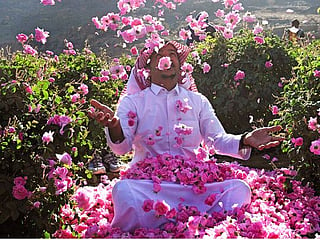Saudi Arabia: 131 people went missing in desert last year
Searchers have embarked on scores of rescue missions across Saudi Arabia’s vast deserts

Abu Dhabi: Over the years, searchers have embarked on scores of rescue missions across Saudi Arabia’s vast deserts. For those who went missing, the vast majority were found within 24 hours. A few were miraculously rescued, beating the odds by surviving in the desert for days.
Unprepared for or ignorant of the desert’s dangers, 131 people went missing last year in various accidents while crossing Saudi Arabia’s deserts, local media reported.
According to the statistics of the Ingad Search and Rescue Association in Riyadh, accidents last year resulted in the death of 20 people from hunger and thirst, but 100 of them were found in good health, while there are no details of 11 other cases.
Geographically, 41 people went missing in Riyadh, 13 in Sharqia, 5 in Najran, 1 in Asir, 2 in Mecca, 3 in Medina, 31 in Ha’il 31, 10 in Qassim, 11 in Tabuk, 3 in Al Jawf, and 11 in the Northern Borders.
More than half the area of Saudi Arabia is desert.
The country has three major deserts. Rub’ al Khali (The Empty Quarter) extends over much of the southeast and beyond the southern frontier. It is one of the largest sand deserts in the world. Partially unexplored, Rub’ al Khali has an estimated area of about 650,000 sq km with lesser portions in Yemen, Oman, and the UAE.
An Nafud or the Great Nafud is an upland desert of red sands covering an area of 64,000 sq km. It lies at an elevation of 3,000 feet (900 meter) in the northern part of Arabian Peninsula. The desert has been a barrier to travel for ages; its frequent sandstorms shape immense dunes and is noted for its sudden violent winds.
Ad Dahna’ is a narrow strip of sandy terrain. This reddish sandy desert is in the central Saudi Arabia, extending about 1,300 km (800 miles) southward from the northeastern edge of An Nafud to the northwestern borders of Rub’ al-Khali. Thus, Ad-Dahna’ links the great deserts of Saudi Arabia.
Surviving tactics in the desert
Major Abdul Khaleq Al Qahtani, spokesman of the Najran Civil Defense Department, said should you find yourself lost or stranded in the desert, your ability to survive will depend on how quickly you can find a source of water. “Most of us take water for granted. Not so in the middle of the desert. The hot sun, dry air, and lack of shade can suck every bit of moisture from your body without you realising it,” he said.
He added stay covered as best as you can. “Shelter might be difficult to find in the desert, but you should look for an outcropping of rocks that cast a shadow for some shade, or if you have a blanket, use that as a lean to for shade against the sun. The idea is to keep those burning rays off of your body until nightfall when you can move on.”
Major Al Qahtani said if you find that you are stranded in the desert for a prolonged period, adjust your sleeping schedule to make yourself nocturnal.
“While in your shaded refuge, take inventory of the survival supplies that you have. When travelling in the desert, you should carry a penknife, water purification tablets, something small to store water, small first aid kit, mirror, rope or chord, and a space blanket. Also, while you are waiting for nightfall, look for water sources,” he said.
Major Al Qahtani added if you have a space blanket, your first job once the sun sets is to set up a lean-to using your chord and any available trees, cacti, or rocks. If you have water with you, you need to ration it carefully. Do not drink more than you must have. The best way to judge if your water intake is sufficient is through the color of your urine. If it is excessively dark, you are not getting enough water.”
“Now you are ready to look for water. If you see any dry streambeds, dig at the lowest, outside point. Make sure you do this at night! If you have a plastic bag on your person, wrap it around the limb of a tree or bush that is exposed to the sun. As the sun warms the bag, it will cause the plant to transpire, and you will be able to collect the resulting water.”
Finally, he said, if you have a good knife, you can cut open cactus plants and squeeze water out of the moist flesh inside. Use caution when working with cacti since they are full of painful spines. The easiest cactus to use for water procuring is the prickly pear. You can burn off the thorns and then eat the meat of the plant. It is sweet and full of needed moisture.
Sign up for the Daily Briefing
Get the latest news and updates straight to your inbox






